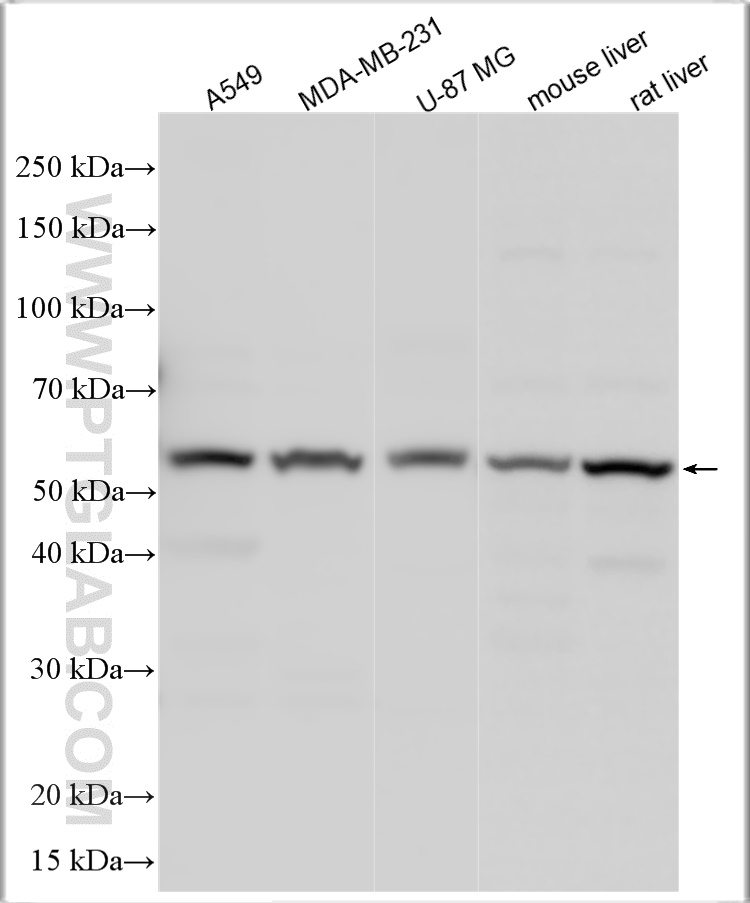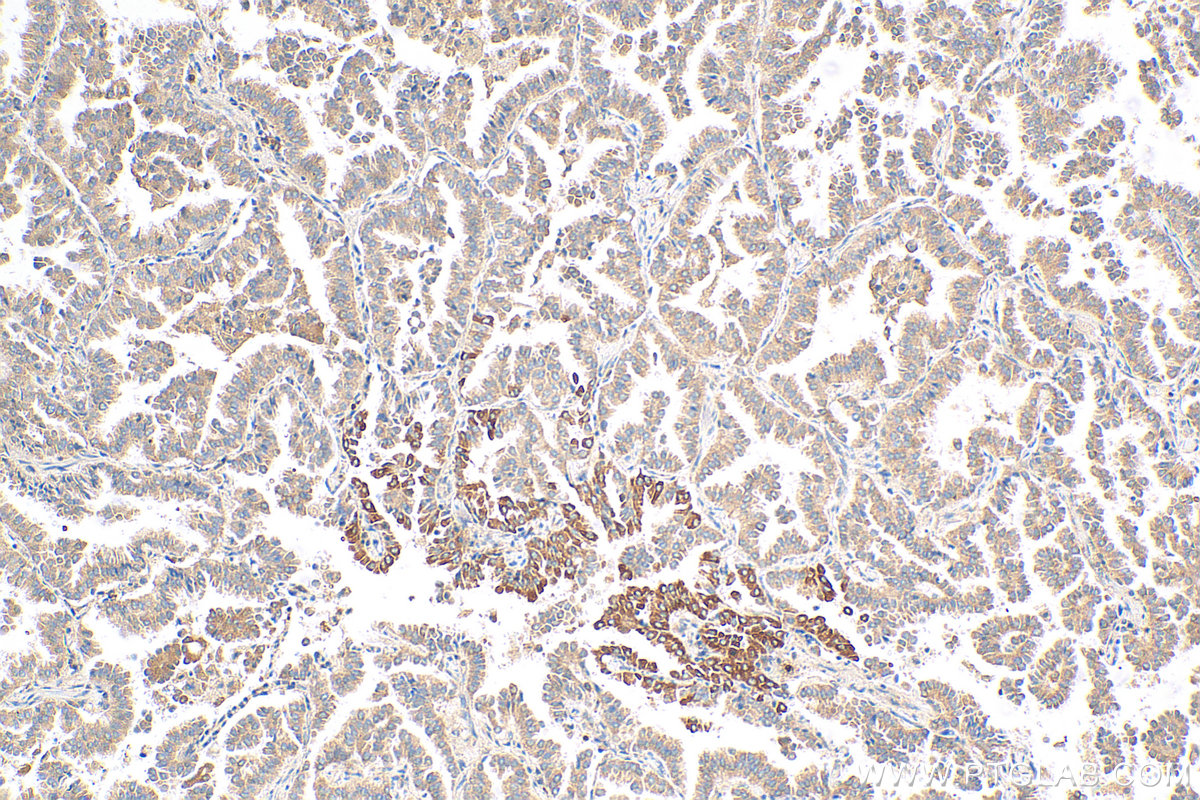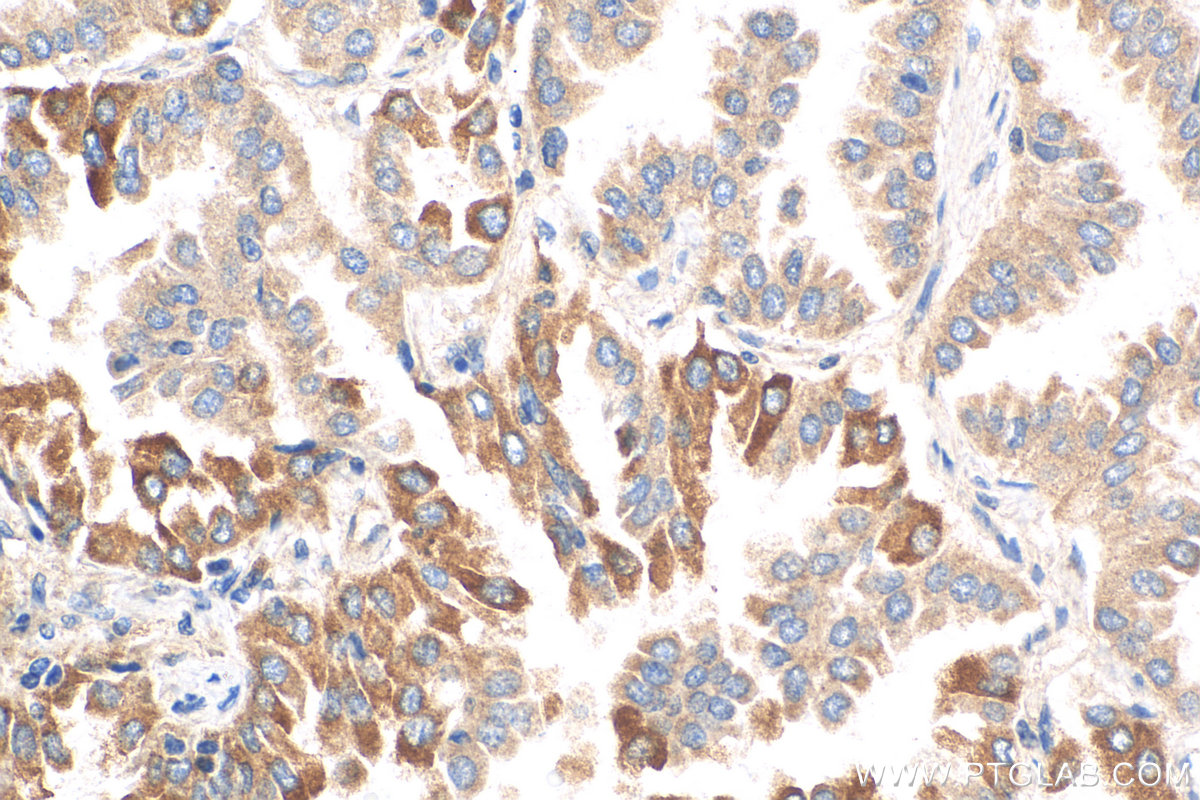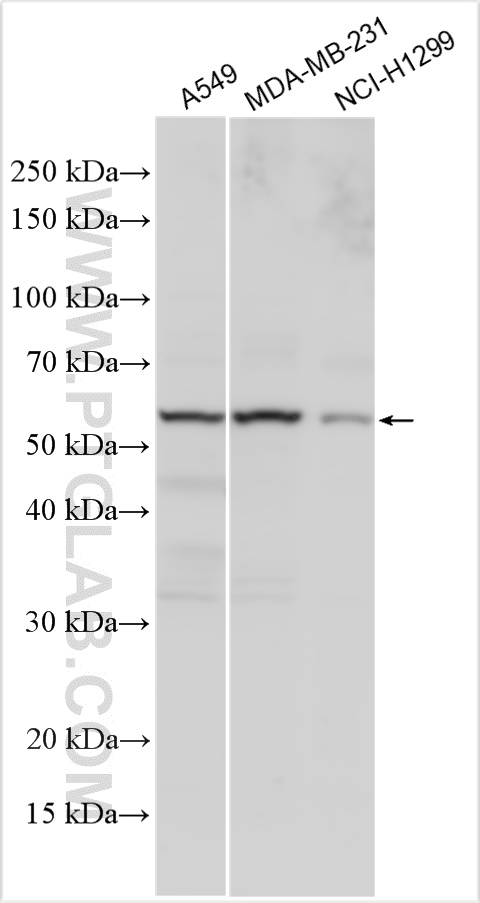验证数据展示
经过测试的应用
| Positive WB detected in | A549 cells, MDA-MB-231 cells, NCI-H1299 cells, U-87 MG cells, mouse liver tissue, rat liver tissue |
| Positive IHC detected in | human lung cancer tissue Note: suggested antigen retrieval with TE buffer pH 9.0; (*) Alternatively, antigen retrieval may be performed with citrate buffer pH 6.0 |
推荐稀释比
| 应用 | 推荐稀释比 |
|---|---|
| Western Blot (WB) | WB : 1:500-1:3000 |
| Immunohistochemistry (IHC) | IHC : 1:200-1:800 |
| It is recommended that this reagent should be titrated in each testing system to obtain optimal results. | |
| Sample-dependent, Check data in validation data gallery. | |
发表文章中的应用
| WB | See 5 publications below |
| IF | See 2 publications below |
产品信息
30117-1-AP targets TGFBR1 in WB, IHC, IF-P, ELISA applications and shows reactivity with human, mouse, rat samples.
| 经测试应用 | WB, IHC, ELISA Application Description |
| 文献引用应用 | WB, IF |
| 经测试反应性 | human, mouse, rat |
| 文献引用反应性 | human, mouse |
| 免疫原 | TGFBR1 fusion protein Ag31620 种属同源性预测 |
| 宿主/亚型 | Rabbit / IgG |
| 抗体类别 | Polyclonal |
| 产品类型 | Antibody |
| 全称 | transforming growth factor, beta receptor 1 |
| 别名 | ACVRLK4, Activin receptor-like kinase 5, Activin receptor like kinase 5, Activin A receptor type II-like protein kinase of 53kD, AAT5 |
| 计算分子量 | 56KD |
| 观测分子量 | 56 kDa |
| GenBank蛋白编号 | NM_004612 |
| 基因名称 | TGFBR1 |
| Gene ID (NCBI) | 7046 |
| RRID | AB_3086235 |
| 偶联类型 | Unconjugated |
| 形式 | Liquid |
| 纯化方式 | Antigen affinity purification |
| UNIPROT ID | P36897 |
| 储存缓冲液 | PBS with 0.02% sodium azide and 50% glycerol , pH 7.3 |
| 储存条件 | Store at -20°C. Stable for one year after shipment. Aliquoting is unnecessary for -20oC storage. |
背景介绍
TGFBR1 (TGF-beta receptor type-1) encodes a serine/threonine kinase receptor for transforming growth factor-beta. TGFB1, TGFB2 and TGFB3 signals are transduced from the cell surface to the cytoplasm and regulate lots of physiological and pathological processes including cell cycle arrest in epithelial and hematopoietic cells, control of mesenchymal cell proliferation and differentiation, wound healing, extracellular matrix production, immunosuppression and carcinogenesis. Mutations in both TGFBR2 and TGFBR1 were associated with early onset and aggressive thoracic aortic disease with MFS-like skeletal features, but also hypertelorism, craniosynostosis, developmental delay, cleft palate and bifid uvula, congenital heart disease and aneurysms, and dissections throughout the arterial tree with marked arterial tortuosity (PMID: 15731757, PMID: 27879313).
实验方案
| Product Specific Protocols | |
|---|---|
| WB protocol for TGFBR1 antibody 30117-1-AP | Download protocol |
| IHC protocol for TGFBR1 antibody 30117-1-AP | Download protocol |
| Standard Protocols | |
|---|---|
| Click here to view our Standard Protocols |
发表文章
| Species | Application | Title |
|---|---|---|
Theranostics Polycomb repressive complex 1 modulates granulosa cell proliferation in early folliculogenesis to support female reproduction | ||
J Nanobiotechnology Determining M2 macrophages content for the anti-tumor effects of metal-organic framework-encapsulated pazopanib nanoparticles in breast cancer | ||
Nat Commun Targeting the transmembrane cytokine co-receptor neuropilin-1 in distal tubules improves renal injury and fibrosis | ||
Mol Cell Biochem Lnc PVT1 facilitates TGF-β1-induced human cardiac fibroblast activation in vitro and ISO-induced myocardial fibrosis in vivo through regulating MYC | ||
Front Pharmacol Isoliensinine suppressed gastric cancer cell proliferation and migration by targeting TGFBR1 to regulate TGF-β-smad signaling pathways | ||
Epigenetics ANRIL upregulates TGFBR1 to promote idiopathic pulmonary fibrosis in TGF-β1-treated lung fibroblasts via sequestering let-7d-5p |



